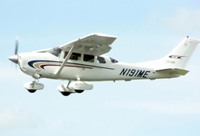Critically ill patient is in danger as six members of organ transplant team die in crash
A critically ill patient could become the seventh fatality of a plane crash that killed six members of an organ transplant team en route to save his life.

The patient, who was on the operating table when the plane went down in Lake Michigan on Monday, is back on the waiting list for another organ.
Divers resumed their search Wednesday in water as much as 50 feet (15 meters) deep, mapping the wreckage and bringing up debris for examination by National Transportation Safety Board investigators. The donor organ, which was packed in ice in a cooler, has not been found.
Hospital officials and organ-donation authorities would not identify the transplant patient other than to say he was a man, and would not say what type of organ he was awaiting, citing medical privacy rules.
But one of the doctors killed was a cardiac surgeon, suggesting the patient was about to get a new heart or lungs.
"It was a very sad moment in the operating room" when word came that the plane had gone down on its way from Milwaukee, said Dr. Jeffrey Punch, chief of transplant surgery at the University of Michigan Health System hospital in Ann Arbor.
The Cessna 550 Citation crashed about 5 p.m., shortly after takeoff. National Transportation Safety Board investigator John Brannen said the pilot had signaled an emergency and was making a left turn and heading back to the Milwaukee airport when the plane went down in 57-degree Fahrenheit (14-degree Celsius) water.
The crash was under investigation.
Killed were both pilots, two University of Michigan surgeons, and two technicians whose job was to prepare the organ for transplant.
Hospital officials would not disclose how far along the surgery was, but said that typically they do not remove a transplant recipient's old organ until they have a replacement ready.
Hearts can last outside the body for only four to six hours and lungs eight hours, said Dr. Tony D'Alessandro, executive director of the University of Wisconsin Hospital and Clinic Organ Procurement Organization.
On the morning of the crash, the Ann Arbor hospital's Survival Flight Team received word that an organ was available at an unidentified hospital in the Milwaukee area. It immediately arranged to bring it back to Ann Arbor, officials said.
The team included two veterans, cardiac surgeon Dr. Martinus "Martin" Spoor and transplant donation specialist Richard Chenault II, who had flown dozens of such missions. Also on the team were Dr. David Ashburn, a 35-year-old physician-in-training in pediatric cardiothoracic surgery, and another transplant donation specialist, Richard LaPensee.
The team flew to Milwaukee, and the two surgeons removed the donor's organ, which was then packaged for transport. The team contacted the Ann Arbor hospital and gave the go-ahead for the surgery to begin on the transplant patient at 2:45 p.m., Punch said.
The plane took off as light rain fell with winds at 12 mph (19 kph), gusting to 22 mph (35.4 kph). At the controls were Dennis Hoyes and Bill Serra, two pilots who worked for Marlin Air Inc., the university's jet-service contractor.
The plane hit the water at about 190 mph (306 kph), authorities said. By midday Tuesday, only small parts of the aircraft including pilot seats and small pieces of the cockpit had been found.
A recent NTSB study found that accidents involving emergency medical services flights those carrying patients or organs for transplant have been increasing. Between January 2002 and January 2005 there were 55 such accidents and 54 deaths.
Subscribe to Pravda.Ru Telegram channel, Facebook, RSS!



